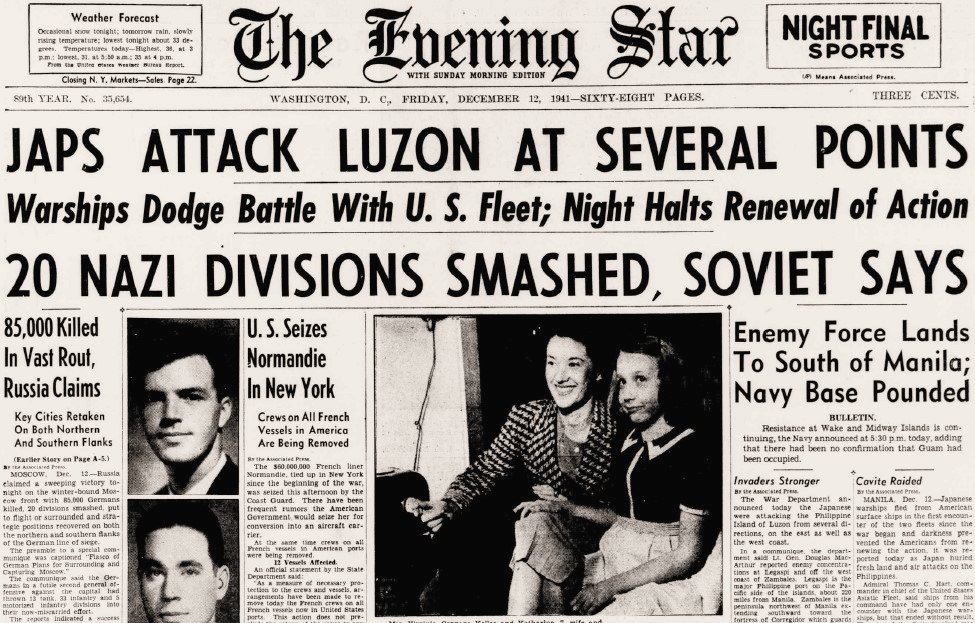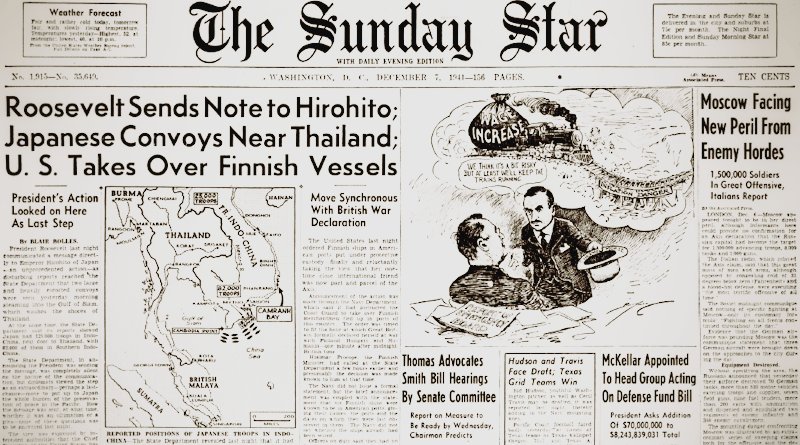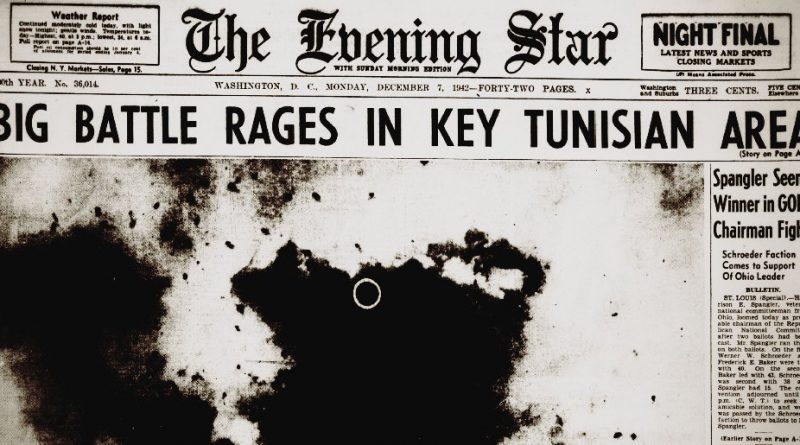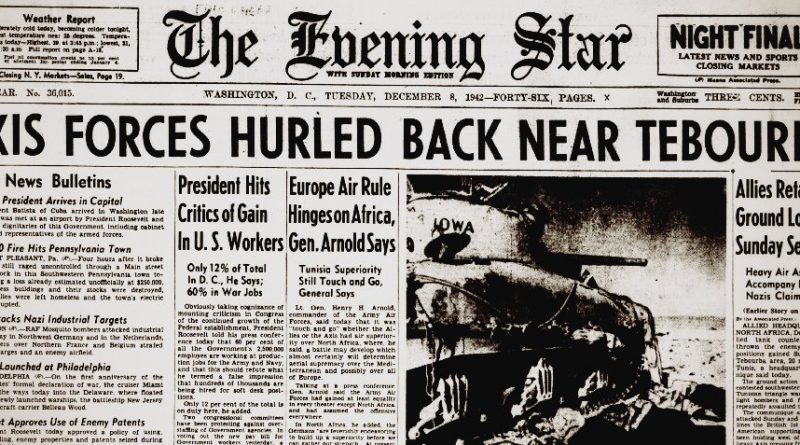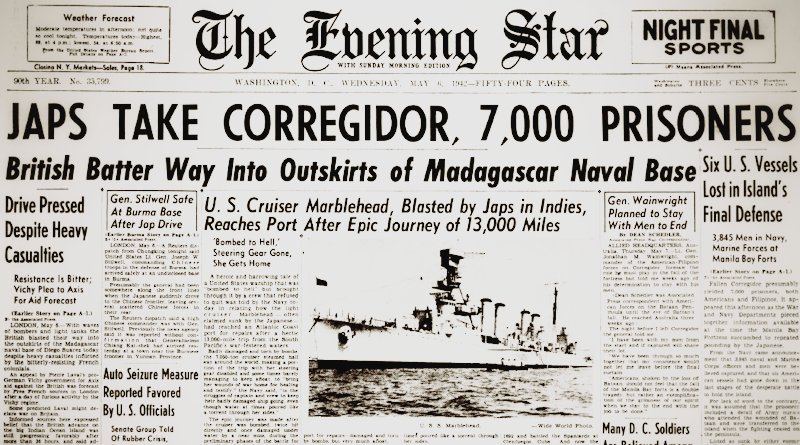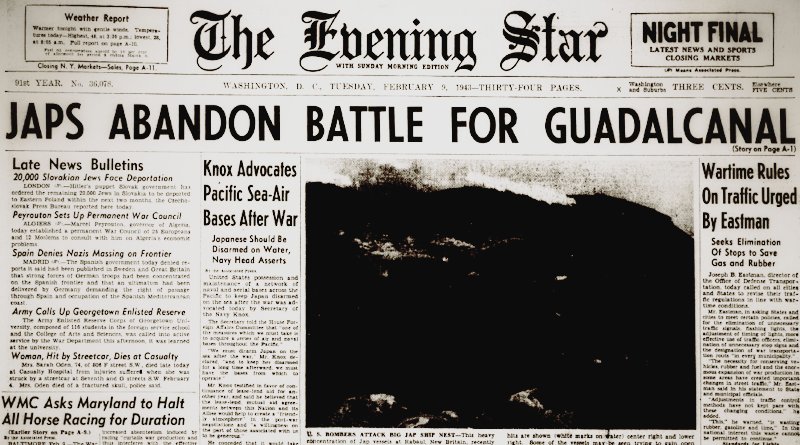World War II Chronicle: December 12, 1941
Click here for TODAY’S NEWSPAPER
See page 18 for the U.S. Office of Civilian Defense’s air raid instructions… Sports section begins on page 62
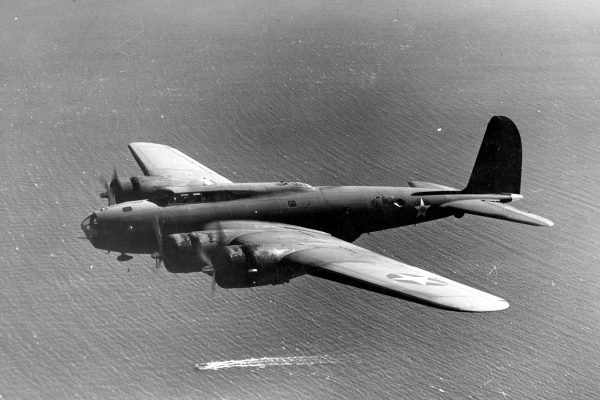
American Heroes
Yesterday we mentioned the B-17 bomber crews that thought they were attacking — and had possibly sunk — a Japanese battleship. With the Japanese striking all across the Pacific, the United States was in desperate need of good news and a hero. Capt. Colin P. Kelly, Jr. was just what America needed.
Three 14th Bomb Squadron Flying Fortresses spotted the Japanese invasion fleet landing troops on the north of Luzon Island, and Capt. Colin P. Kelly, Jr.’s B-17 dropped their bombs on the largest ship (which they thought was Haruna but in fact was the heavy cruiser Ashigara). The crew believed that two of the three 600-lb. bombs hit the ship, and since smoke obscured the target after their attack and they had no fighter cover, the B-17s headed back to base.
On the return leg, Japanese fighters targeted Kelly’s bomber, killing the engineer and setting the rear of the fuselage on fire. Kelly held the crippled bomber steady while his crew bailed out, perishing when his B-17 crashed five miles away from Clark Field. The parachuting airmen managed to avoid Japanese machinegun rounds as the enemy pilot strafed them during their descent, but Kelly’s actions saved the rest of his crew.
Kelly received a posthumous Distinguished Service Cross and his bombardier, Cpl. Meyer Levin (who would actually sink a Japanese ship during the Battle of the Coral Sea), was hailed as the first Jewish-American hero of the war.
President Roosevelt wrote a letter addressed to the future President of the United States requesting an appointment to the U.S. Military Academy for Kelly’s son. In 1959, President Dwight Eisenhower did just that for Colin P. Kelly III (pictured on page three of Dec. 13th newspaper), who graduated in 1963.
Pictured below Capt. Kelly on today’s front page is 1st Lt. Boyd D. Wagner, commander of the 17th Pursuit Squadron, who just notched two aerial victories against the Japanese during a solo reconnaissance mission above Aparri. Five enemy warplanes attacked Wagner’s P-40, and only three survived. He turned his guns on enemy planes parked at the airstrip, then returned home unscathed. Stay tuned for more on “Buzz” Wagner…
‘Rabbit’ goes back to war
Baseball’s Walter J.V. “Rabbit” Maranville is about to serve in his second world war (see page 2). He served as a gunner aboard the battleship USS Pennsylvania (now undergoing repairs at Pearl Harbor) during the first war. Rabbit will assist former heavyweight champion Gene “The Fighting Marine” Tunney — also serving in his second war — in running the Navy’s physical fitness program for aviation cadets.
Maranville was a notorious prankster. From the Society of American Baseball Research:
On November 10, 1918, Rabbit told his shipmates that they would get big news the next day. “Everyone kept asking me what the big news was going to be,” [Maranville] remembered. “I said, ‘Wait until tomorrow; I will tell you then.’ At 6:30 the next morning we got word that the armistice had been signed. That afternoon I was called in to the captain’s quarters. The captain said to me, ‘How is it you knew the armistice was going to be signed today? Who gave you that information?’ I said, ‘I didn’t know anything about the armistice being signed. The reason I said the big day is tomorrow and they would hear great news is that today is my birthday.'”
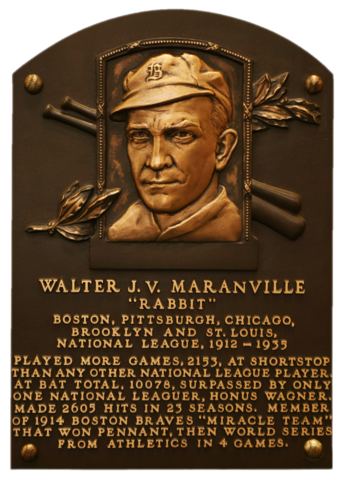
Navy Football’s Ingram Brothers
The sports section mentions that former Naval Academy head coach William A. “Navy Bill” Ingram was reportedly serving aboard the battleship USS Oklahoma during the Pearl Harbor attacks.
Navy football was somewhat a family business during the early 20th Century: Jonas H. “One-Armed Admiral” Ingram was a fierce competitor, earning the nickname by frequently declaring “I’d give my right arm to win this ball game.” Jonas would earn the Medal of Honor at Vera Cruz in 1914 and the Navy Cross during World War I.
Next up was Homer L. Ingram: Army’s head coach, Charles Daly said that “Many of my new plays were broken up by Ingram, the Navy end, before they were even started.” Homer served in the submarine fleet before influenza took his life in 1918.
By the time Navy Bill joined the Midshipmen, Jonas was the head coach. Bill became an All-American halfback and would return to coach Navy in 1926, leading them to a 9-0-1 record (tying Army) and a national championship. At this point in the war Bill is a Marine Corps officer and Jonas is about to pin on his third star and become Commander of the Atlantic Fleet’s Cruiser Division 2. He is named Commander-in-Chief of the Atlantic Fleet in 1944.
Both Jonas and Bill are members of the National College Football Hall of Fame. Speaking of Marines who are successful head coaches, we have previously discussed the Naval Academy’s Swede Larsen, but Minnesota’s Bernie Bierman — a veteran of the first world war and arguably the best coach in the country — holds a reserve commission and will serve three years during World War II.
1941 All-American Team
Page 64 lists the Associated Press’ All-American team, which is one of several organizations that choose an “All-American” team. Harvard guard Endicott Peabody1 is football’s only unanimous selection, appearing on every one of the nine officially recognized organizations’ lists.
Consensus All-Americans (receiving four or more first-team selections): Ends Holt Rast (Alabama) and Bob Dove1 (Notre Dame); tackles Dick Wildung1 (Minnesota) and Ernie Blandin (Tulane); guard Ray Frankowski (Washington); center Darold Jenkins1 (Missouri); quarterback Frankie Albert1 (Stanford); halfbacks Bruce Smith2 (Minnesota), Frank Sinkwich1 (Georgia), and “Bullet Bill” Dudley1 (Virginia); and fullback “Bullet Bob” Westfall1 (Michigan).
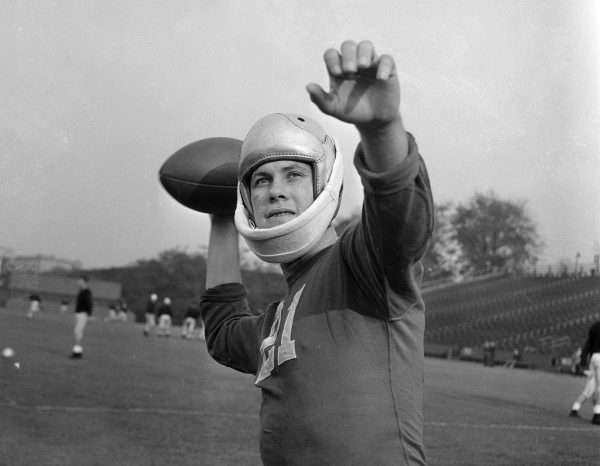
Rounding out the Associated Press’ first-team were Texas end Malcolm Kutner,1 Wisconsin end Dave Schreiner,1 California tackle Bob Reinhard, and Pittsburgh guard Ralph Fife.
Duke fullback Steve Lach1 and Detroit center Vince Banonis1 made the AP’s second and third teams respectively.3
1: Enshrined in the College Football Hall of Fame
2: 1941 Heisman Trophy winner, also in the College Football Hall of Fame
3: Both were International News Service first-team selections
Evening star. (Washington, D.C.), 12 December 1941. Chronicling America: Historic American Newspapers. Lib. of Congress.
https://chroniclingamerica.loc.gov/lccn/sn83045462/1941-12-12/ed-1/
